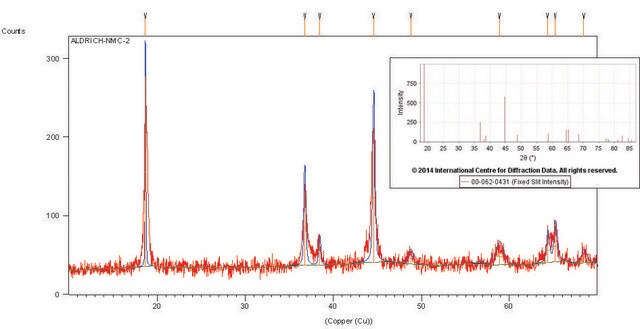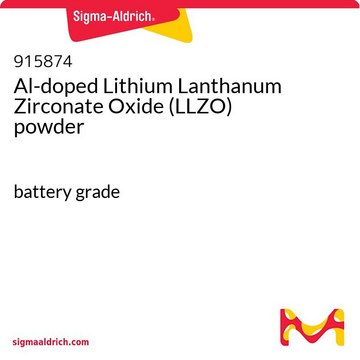759546
Lithium iron(II) phosphate
powder, <5 μm particle size (BET), >97% (XRF)
Synonym(s):
Ferrous lithium phosphate, Iron lithium phosphate, LFP, Triphylite
About This Item
Recommended Products
grade
battery grade
Quality Level
Assay
>97% (XRF)
form
powder
mol wt
Mw 157.76 g/mol
composition
LiFePO4
greener alternative product characteristics
Design for Energy Efficiency
Learn more about the Principles of Green Chemistry.
sustainability
Greener Alternative Product
particle size
<5 μm (BET)
mp
>300 °C (lit.)
density
3.6 g/cm3 (lit.)
application(s)
battery manufacturing
greener alternative category
InChI
1S/Fe.Li.H3O4P/c;;1-5(2,3)4/h;;(H3,1,2,3,4)/q+2;+1;/p-3
InChI key
GELKBWJHTRAYNV-UHFFFAOYSA-K
Looking for similar products? Visit Product Comparison Guide
Related Categories
General description
Application
Features and Benefits
✔ Achieves 1000s of cycles
✔ Safer than cobalt or manganese-based cathode materials
✔ Reliable performance
Legal Information
related product
Storage Class Code
11 - Combustible Solids
WGK
WGK 1
Flash Point(F)
Not applicable
Flash Point(C)
Not applicable
Regulatory Listings
Regulatory Listings are mainly provided for chemical products. Only limited information can be provided here for non-chemical products. No entry means none of the components are listed. It is the user’s obligation to ensure the safe and legal use of the product.
JAN Code
759546-BULK:
759546-VAR:
759546-5G:
Choose from one of the most recent versions:
Already Own This Product?
Find documentation for the products that you have recently purchased in the Document Library.
Customers Also Viewed
Articles
Professor Qiao’s laboratory lays out recent advances in conversion type lithium metal fluoride batteries. This review explores key concepts in developing electrochemically stable microstructures for wide Li-ion insertion channels.
The critical technical challenges associated with the commercialization of electric vehicle batteries include cost, performance, abuse tolerance, and lifespan.
Li-ion batteries are currently the focus of numerous research efforts with applications designed to reduce carbon-based emissions and improve energy storage capabilities.
Lithium-ion batteries (LIBs) have been widely adopted as the most promising portable energy source in electronic devices because of their high working voltage, high energy density, and good cyclic performance.
Our team of scientists has experience in all areas of research including Life Science, Material Science, Chemical Synthesis, Chromatography, Analytical and many others.
Contact Technical Service












